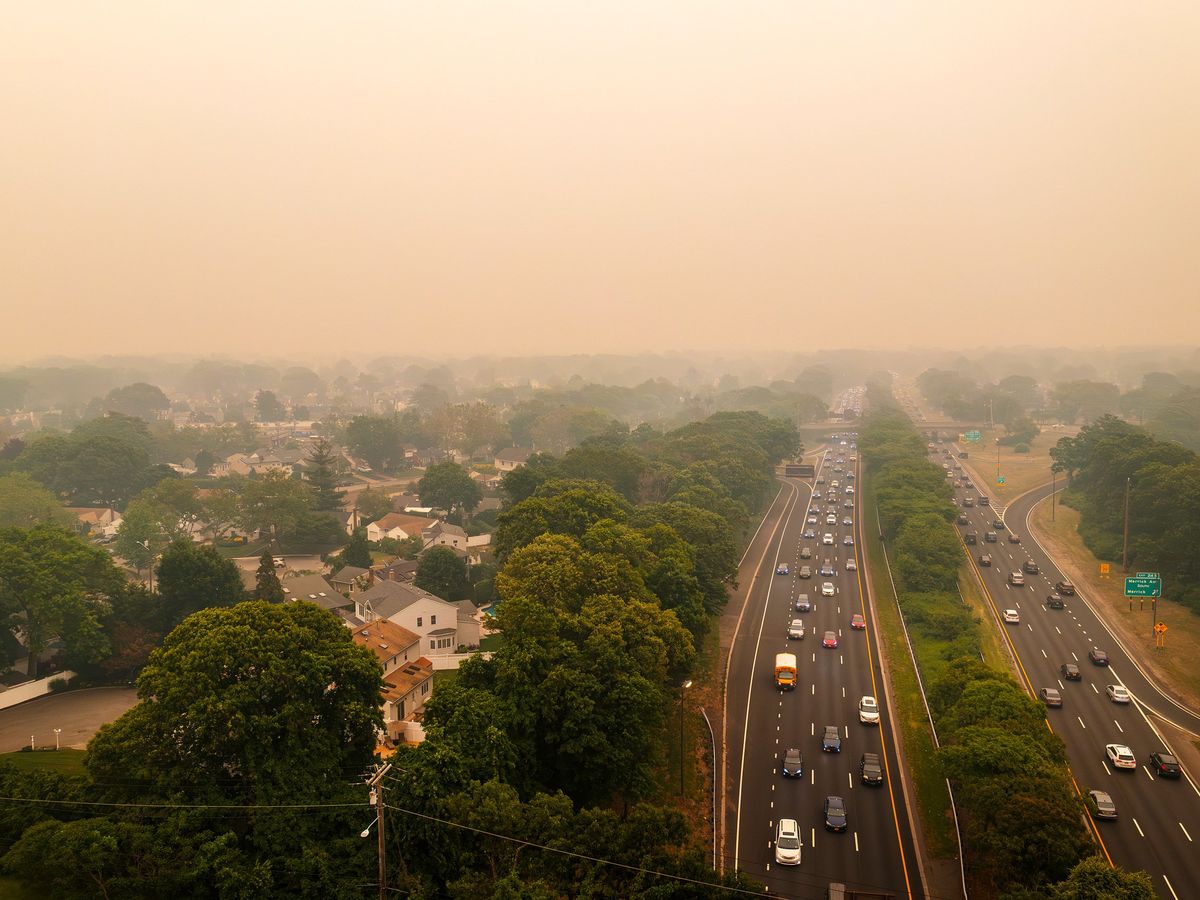This article is part of our exclusive IEEE Journal Watch series in partnership with IEEE Xplore.
Last month, as smoke from wildfires burning in Canada smothered the U.S. Northeast, it turned skies red and the air unhealthy to breathe. The hazy skies also dimmed solar power output. Solar farms in New England produced less than half the power they did before smoke enveloped them, according to Bloomberg News.
As both wildfire events and solar power generation rise around the world—the former a result of climate change and the latter a means to combat it—studying the impact of smoke on photovoltaic systems becomes important.
“If we rely more on solar power in the future, and we have more wildfires, this is going to be a serious problem.”
—Long Zhao, South Dakota School of Mines and Technology
Studies have so far looked at how smoke affects photovoltaics’ power output overall. But researchers now highlight for the first time how wildfire smoke could affect the stability of the power grid. On smoky days, PV installations produce a rapidly zigzagging power output, the researchers reported, in a study published recently in the proceedings of the 2023 IEEE/IAS 59th Industrial and Commercial Power Systems Technical Conference. This wiggling output—which they term the “wiggle effect”—could cause frequency instability, jeopardizing the grid.
“Technically, the problem gets worse with bigger photovoltaic systems,” says Long Zhao, professor of electrical engineering and computer science at the South Dakota School of Mines and Technology. “The reason we have not seen any problems yet is that we do not have enough solar installed. If we rely more on solar power in the future, and we have more wildfires, this is going to be a serious problem.”
Grid operators continually balance power supply with demand to keep the grid operating at a constant frequency. Adding solar power sources to the grid carries the risk of throwing the system off balance and causing frequency instability because of the inverters that convert the direct current (DC) supplied by solar panels into alternating current (AC) for the power grid. Today’s inverters are not smart enough to adjust the power they throw onto the grid to match consumption.
While PV power output dipped sharply on cloudy days, smoke caused a zigzagging power output on a much faster scale.
Smoke worsens that effect by changing the output of solar panels over the course of minutes. “The density of wildfire smoke is not even,” Zhao says. “So the output of solar panels is not smooth. If supply goes up and down all the time because of changing smoke conditions, then the frequency in the system will change all the time, and this is going to cause instability.”
Zhao and colleagues conducted their study on smoke’s impact in early September 2022, as large wildfires broke out in the Northern Rockies and smoke covered the South Dakota Mines campus for eight days. The researchers measured the power output every five minutes from a 3-kilowatt rooftop solar system consisting of eight silicon solar panels. While PV power output dipped sharply on cloudy days, smoke caused a zigzagging power output on a much faster scale.
Smoke caused sudden changes in PV power generation of 2.17 percent on average, the researchers calculated. For two large power systems, one each in California and Texas, this would mean a power deviation of over 570 megawatts and 220 MW, respectively.
Grid operators will need much faster frequency control strategies to overcome this wiggle effect and reduce instability, Zhao says. Conventional strategies to stabilize the grid, such as backup natural-gas power plants, will not suffice. For the faster timescale, he says, “I think the most reasonable way to handle it will be energy-storage systems, to use batteries to smooth out the power output curve.”
He adds that while forecasting the impact of clouds on solar generation has been widely studied and discussed, similar studies on smoke impact could be warranted. Smoke, however, is really hard to predict. Zhao and colleagues are now trying to build a model to predict the wiggle effect. “We are trying to see whether we can estimate the wiggle effect range if we know where wildfire happens,” he says.
Prachi Patel is a freelance journalist based in Pittsburgh. She writes about energy, biotechnology, materials science, nanotechnology, and computing.



